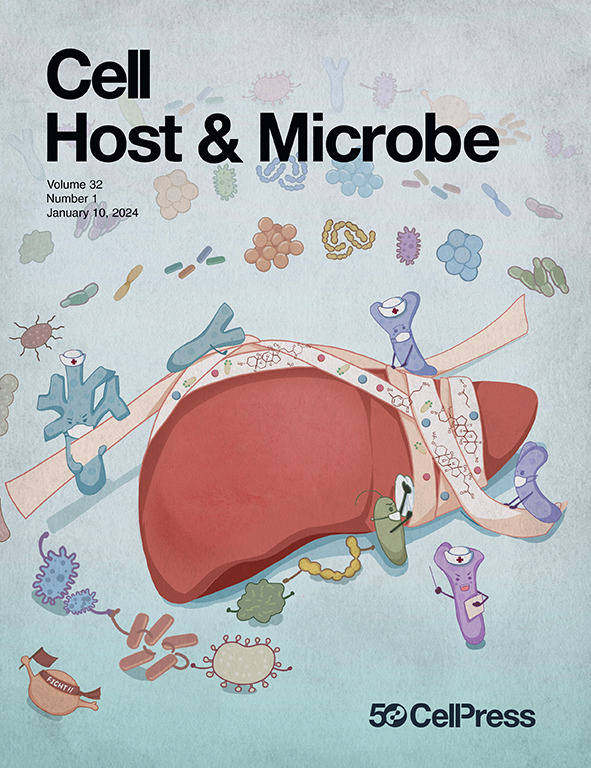一种细菌的垃圾是另一种细菌的宝藏
IF 18.7
1区 医学
Q1 MICROBIOLOGY
引用次数: 0
摘要
人类肠道微生物通常被认为与其他微生物竞争营养。然而,他们也可以一起工作来共享资源。在本期《细胞宿主》杂志中;微生物,Zhou等人发现两种不同种类的共生细菌通过一种新的交叉进食途径代谢一种膳食抗氧化剂。本文章由计算机程序翻译,如有差异,请以英文原文为准。
One bacterium’s trash is another’s treasure
Human gut microbes are often thought to compete with other microbes for nutrients. However, they can also work together to share resources. In this issue of Cell Host & Microbe, Zhou et al. discover that two distinct species of commensal bacteria metabolize a dietary antioxidant through a novel cross-feeding pathway.
求助全文
通过发布文献求助,成功后即可免费获取论文全文。
去求助
来源期刊

Cell host & microbe
生物-微生物学
CiteScore
45.10
自引率
1.70%
发文量
201
审稿时长
4-8 weeks
期刊介绍:
Cell Host & Microbe is a scientific journal that was launched in March 2007. The journal aims to provide a platform for scientists to exchange ideas and concepts related to the study of microbes and their interaction with host organisms at a molecular, cellular, and immune level. It publishes novel findings on a wide range of microorganisms including bacteria, fungi, parasites, and viruses. The journal focuses on the interface between the microbe and its host, whether the host is a vertebrate, invertebrate, or plant, and whether the microbe is pathogenic, non-pathogenic, or commensal. The integrated study of microbes and their interactions with each other, their host, and the cellular environment they inhabit is a unifying theme of the journal. The published work in Cell Host & Microbe is expected to be of exceptional significance within its field and also of interest to researchers in other areas. In addition to primary research articles, the journal features expert analysis, commentary, and reviews on current topics of interest in the field.
 求助内容:
求助内容: 应助结果提醒方式:
应助结果提醒方式:


